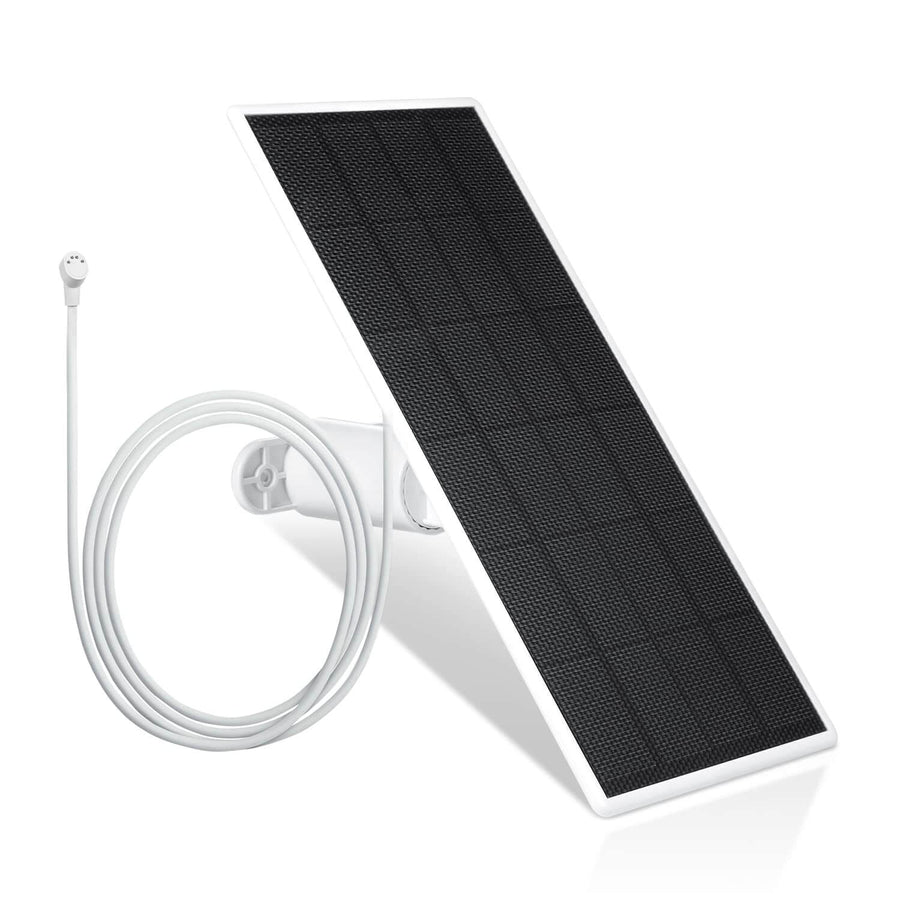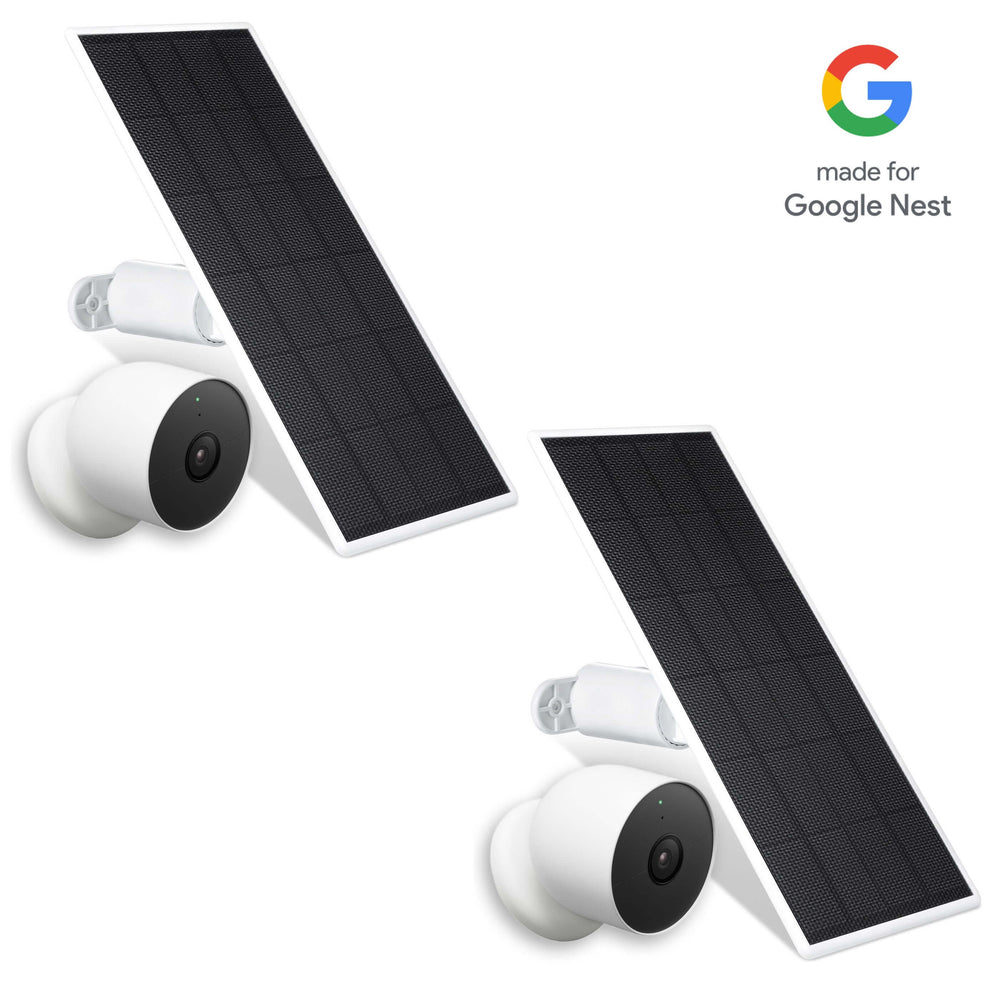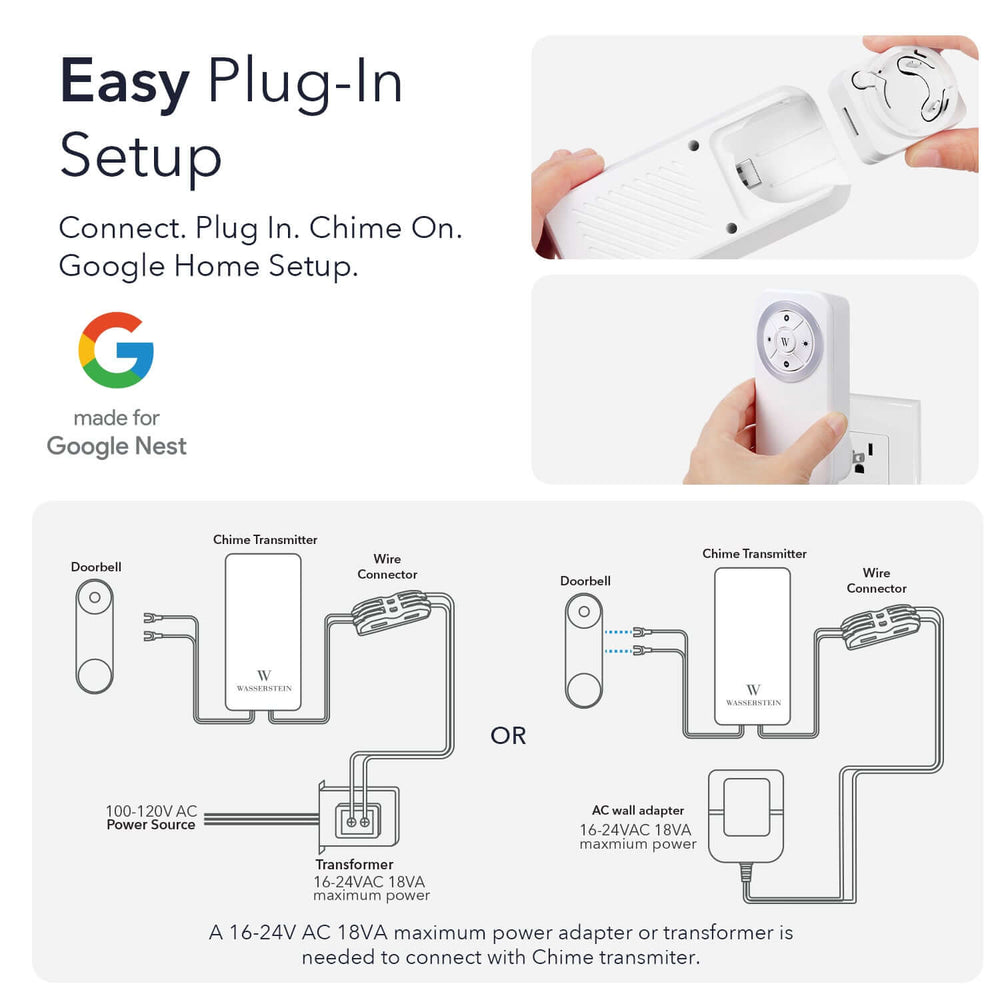Essential Smart Home Security Trends to Enhance Your Safety in 2025
Quick Summary
-
The home security industry is transforming fast through smart home devices, AI features, and energy-efficient systems.
-
Homeowners and renters alike are upgrading to smart home security systems for real-time protection and seamless integration with existing smart home devices.
-
Artificial intelligence, smart sensors, and wireless systems are driving smarter, more proactive security solutions.
-
Wasserstein’s smart accessories enhance performance and reliability across leading security brands like Google Nest, Arlo, Ring, and Blink.
The New Era of Smart Home Security
Home protection has evolved far beyond alarms and locks. Thanks to advances in smart technology and artificial intelligence, today’s smart home security systems deliver not only protection but also peace of mind, energy savings, and control from anywhere. Smart homes, as integrated and connected living environments, enhance security, convenience, and energy efficiency through a variety of smart devices.

Today, more than half of all U.S. homes have at least one security camera or video doorbell, while millions more plan to upgrade in 2025. Whether you want professional monitoring or self-monitoring, security companies now offer scalable solutions that fit your home, lifestyle, and budget. Intuitive apps make it easy to integrate and manage new devices, allowing homeowners to customize their security setup as their needs change.
Wasserstein Floodlights are an essential upgrade for smart cameras like Ring and Blink, enhancing visibility in low light and eliminating the need for frequent battery changes. Their adjustable mounts ensure perfect positioning for maximum coverage—a key feature for outdoor cameras monitoring your yard or front door.
This fusion of smart accessories and modern systems allows users to create customized, AI-powered home environments that keep their property and family members safe. Real-time monitoring is now a key feature, providing instant alerts and continuous oversight to enhance safety and deliver peace of mind.
Artificial Intelligence and Predictive Home Protection
The biggest driver of smart home security trends in 2025 is artificial intelligence (AI). Once limited to smartphones, AI has now become the heart of smart devices, enabling systems that think, learn, and evolve.
Modern AI-powered cameras and smart locks can use facial and voice recognition as advanced security features. Face recognition allows these devices to identify individuals, enhancing home security by granting access to trusted people and alerting homeowners about unknown visitors. Over time, these AI features can detect unusual patterns, such as repeated visits from an unknown person or motion at odd hours, triggering real-time alerts.

AI-powered cameras can help identify familiar faces and voices. Image courtesy of Nest.
By leveraging machine learning, security systems can even reduce false alarms by distinguishing normal household activity from suspicious behavior. Combined with cloud storage and local processing, data is handled securely and efficiently for fast, accurate decision-making.
To keep AI-driven systems running reliably, Wasserstein Solar Panels are an ideal companion. Designed with high-efficiency solar cells and 360° rotatable mounts, they ensure your smart cameras remain powered even on cloudy days. With their ample-length cables, you can position cameras for optimal sunlight exposure and uninterrupted monitoring.
Smarter Sensors: The Backbone of Modern Systems
Behind every great home security system lies a network of smart sensors that detect changes your cameras might miss. From motion sensors to smart water detectors, these compact devices are transforming home protection by catching potential threats early.
Advanced smart sensors now do more than just detect movement. They identify water leaks, glass breaks, and even temperature changes. Some home security devices are smart enough to tell whether a motion came from your pet or an unfamiliar person, minimizing unnecessary notifications. When paired with motion sensors and smart lights, your sensors can automate your home environment, such as with lighting hallways when motion is detected or locking doors automatically when you leave.
DIY and Wireless Systems: Smart, Flexible, and Affordable
For many, the appeal of smart home security lies in its easy installation and wireless flexibility. DIY systems have become one of the biggest smart home trends, especially among renters alike who can’t modify walls or hardwire devices.
Wireless systems like Ring Alarm, Blink, and Eufy are built for quick setup and self-monitoring. Using intuitive apps, you can manage your security cameras, alarm system, and smart locks from your smartphone or voice assistant such as Google Home or Google Assistant. These modern systems also integrate effortlessly with smart speakers, which are commonly used for voice control and can play music, highlighting their versatility in a modern smart home setup. With smart speakers, you can use voice commands for everyday tasks like locking the door or checking the porch camera.
To take these setups further, Wasserstein Mounts provide secure and flexible options for your smart security devices:
-
Gutter mounts position cameras high up for a wider viewing angle and a tamper-proof setup.
-
Anti-theft mounts shield cameras from unauthorized removal or damage.
-
Angled mounts for doorbells give the perfect view of your front door, reducing blind spots.
-
Solar charger mounts keep video doorbells powered without constant recharging.
Professional Installation and 24/7 Monitoring Services
While DIY setups are booming, professional installation and monitoring services still play a vital role in home security systems. For many families, the assurance that experts are keeping watch 24/7 provides priceless peace of mind.
Professional monitoring connects your home to a control center that can immediately contact emergency services, whether it’s a break-in, fire, or medical event. In 2025, more than half of all security users choose professional monitoring, while 61% prefer professional installation for accuracy and convenience.

Ring offers 24/7 continuous video recording (CVR) with a subscription to Ring Home. Image courtesy of Ring.
Top security brands like ADT, Ring, and Vivint continue to expand their monitoring services, offering integration with smart home devices and mobile apps for real-time updates. Whether you’re home or away, you can manage access, review footage, and adjust AI features remotely.
And when it comes to ensuring your video doorbells are always heard, a doorbell chime is the perfect complement. It provides customizable ringtones, LED color alerts, and a built-in nightlight, ensuring you’ll never miss a visitor or delivery notification, even if your phone’s on silent.
Advanced Security Features Powering Next-Generation Home Security
Next-generation home security is defined by advanced features that merge AI, automation, and connectivity. The result? Systems that don’t just react. They anticipate.
Here are some standout smart home trends transforming the market:
-
Facial Recognition & Voice Recognition: AI-powered systems now identify familiar faces or voices to prevent unauthorized access.
-
Two-Way Audio: Integrated in smart cameras and video doorbells, this feature allows homeowners to communicate with visitors or deter intruders from anywhere.
-
Infrared Technology & Night Vision: Enables security cameras to record clear footage, even in complete darkness.
-
Cloud Storage & Local Processing: Modern systems often combine both for faster access, enhanced privacy, and data redundancy.
-
Automatic Adjustments: Systems that automatically adjust lighting, thermostat, or lock status based on user habits or AI learning.
-
Smart Lock Integration: Smart locks use AI and automation to provide enhanced security and convenience, offering features like remote access, unique access codes for guests, and seamless integration with other smart devices such as doorbells, cameras, and voice assistants.
These smart security devices deliver more advanced features than ever, allowing users to manage their homes intuitively. The beauty of this technology lies in its ability to blend convenience with control, adapting to how families live rather than forcing them to adapt to the system.
Sustainable Smart Security: Solar-Powered Protection
With the global push for sustainability, solar-powered smart devices have become a defining trend in smart home security.
From solar panels to floodlights, energy-efficient setups are helping households reduce both electricity costs and carbon footprints, all while maintaining continuous power for essential home security devices.

Wasserstein Solar Panels exemplify this trend. Designed with high-efficiency solar cells and adjustable mounts, they capture energy even in low sunlight. Their ample cable length provides flexible placement options, ensuring your security cameras stay charged without frequent battery swaps. Combined with Wasserstein Floodlights, you can enhance night vision, illuminate dark corners, and keep your property secure around the clock.
As more households adopt solar-powered devices, security companies are expected to expand offerings that support green energy and energy independence, ushering in a cleaner, smarter generation of home security systems.
Smart Home Integration and Cybersecurity
One of the biggest advantages of modern smart home security systems is how effortlessly they connect with existing smart home devices.
Integration with smart lights, smart locks, and smart speakers such as Google Home or Alexa lets you control your security ecosystem through simple voice commands. Voice assistants enhance user convenience and security by enabling seamless management of smart home security systems. Want to check your front door camera or lock the door? Just ask your voice assistant.
However, as more smart technology connects to the internet, cybersecurity becomes crucial. The home security industry has faced challenges with data breaches, making it essential for consumers to choose systems with encrypted connections, multi-factor authentication, and secure cloud storage.
Smart homeowners are now combining physical and digital protection, ensuring their smart home devices not only deter physical threats but also safeguard personal data. Regular software updates, strong passwords, and trusted brands like Wasserstein can help maintain this balance.
The Future of Smart Home Security
Looking ahead, smart home security trends point toward predictive intelligence, eco-conscious design, and deeper integration with all aspects of daily living.
As AI-powered systems evolve, they’ll use machine learning to recognize not only faces and voices, but also patterns of motion, time-of-day habits, and even environmental cues like temperature or humidity.
Future smart security devices will likely communicate seamlessly across brands and platforms, from your video doorbells and smart locks to your thermostats and smart speakers. These systems will also help prevent package theft by providing real-time video monitoring and instant alerts for deliveries, giving homeowners peace of mind and video evidence if theft occurs. Homes will soon feature new technology capable of adjusting automatically for comfort and security, while still giving owners full control through voice commands or mobile apps.
Even everyday tools are becoming smarter. It’s a small but meaningful example of how smart home features are simplifying modern life while keeping you connected and organized.
Ultimately, the next generation of home security will be defined by systems that adapt to your lifestyle, minimize energy use, and learn from your daily routines, creating an environment that’s not only safe but also intuitive, sustainable, and connected.
FAQs
What are the latest smart home security trends in 2025?
AI-powered cameras, smarter motion sensors, integrated smart home devices, solar-powered security, predictive alerts, multi-device compatibility, and professional monitoring are the key trends enhancing safety in 2025.
How do smart cameras improve home security?
Smart cameras use AI to detect people, pets, and vehicles, reduce false alerts, and integrate with motion sensors and floodlights for automated responses and professional monitoring.
Can smart home devices work together?
Yes. Modern smart devices are designed to integrate, allowing cameras, sensors, locks, and lights to communicate for automated, unified home security.
What is the role of professional monitoring?
Professional monitoring provides 24/7 oversight, analyzing AI alerts, notifying homeowners, and contacting authorities if needed for rapid response during emergencies.
Are motion sensors still necessary with cameras?
Yes. Motion sensors enhance security by detecting movement in areas without cameras, triggering alerts, lights, and recordings, creating a layered protection system.
How do solar-powered security devices help?
Solar-powered devices, like cameras and floodlights, maintain operation during power outages, reduce energy costs, and allow flexible placement without relying on traditional electricity.
Can I control my home security remotely?
Yes. Most smart home devices allow remote access via apps to monitor cameras, receive alerts, control locks, and activate lights from anywhere.
Which Wasserstein products enhance smart home security?
Wasserstein floodlights and solar panels integrate seamlessly with smart home systems, providing reliable, AI-enabled, and energy-efficient security solutions.








Leave a comment